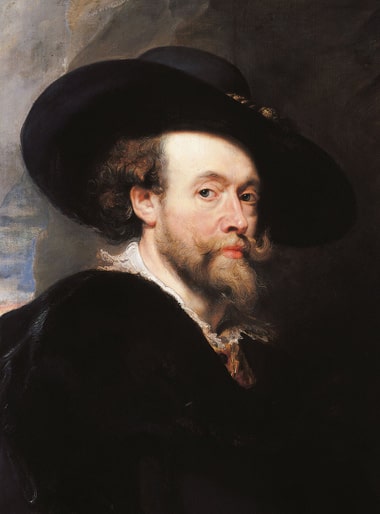Peter Paul Rubens Biography

Peter Paul Rubens, the prolific Flemish Baroque painter, was born in 1577 in Siegen, Westphalia. Known for his dynamic compositions, vibrant colors, and masterful handling of light and shadow, Rubens' art captures the drama and emotion of his subjects with a bold, energetic style that has left an indelible mark on the history of European art.
Peter Paul Rubens, born in 1577 in Siegen, Westphalia, was a Flemish Baroque painter known for his dynamic compositions, vibrant colors, and masterful handling of light and shadow. His early years were spent in Antwerp, Belgium, where he received his artistic training under various masters, including Otto van Veen and Adam van Noort, who influenced his early style and approach to painting.
Rubens' artistic development was further shaped by his travels to Italy, where he studied the works of the Italian Renaissance masters and absorbed the classical influences that would inform his later works. Upon his return to Antwerp, Rubens established a successful workshop and quickly gained a reputation for his bold, energetic style and his ability to capture the drama and emotion of his subjects.
One of Rubens' most significant contributions to art was his embrace of the Baroque style, characterized by its dramatic lighting, dynamic compositions, and emotional intensity. His paintings, such as "The Descent from the Cross" and "The Garden of Love," exemplify his mastery of the Baroque aesthetic, with their rich colors, swirling forms, and sense of movement that draw the viewer into the scene.
In addition to his artistic achievements, Rubens was also a skilled diplomat and courtier, serving as a trusted advisor to the Spanish Habsburgs and the English Stuart court. His diplomatic missions took him across Europe, where he encountered a diverse range of artistic styles and cultural influences that enriched his own work and broadened his artistic horizons.
Despite his busy schedule and demanding career, Rubens found time for personal pursuits, including his marriage to Isabella Brant and the raising of their children. His family life had a profound impact on his work, influencing the themes and subjects of his paintings and imbuing his art with a sense of warmth and humanity that resonates to this day.
Rubens' legacy as a master of the Flemish Baroque tradition is undeniable, with his influence extending to subsequent generations of artists and shaping the course of European art. His monumental works, created for churches, palaces, and private collectors, continue to captivate audiences with their grandeur, beauty, and emotional power, cementing his place as one of the most important and influential painters of the Baroque era.